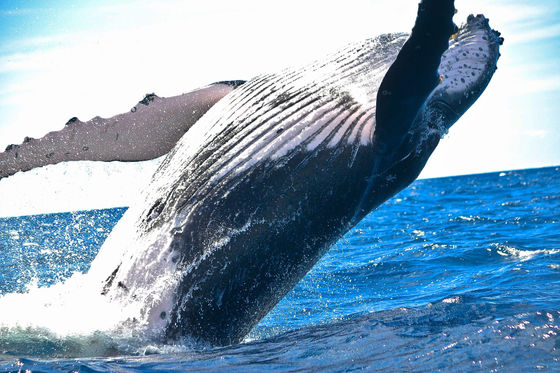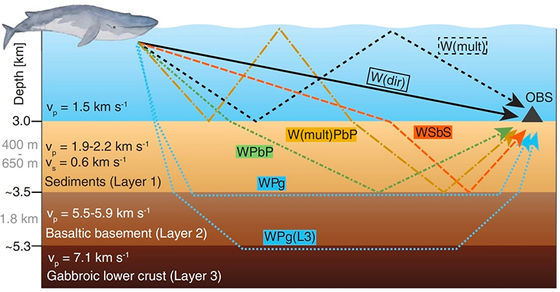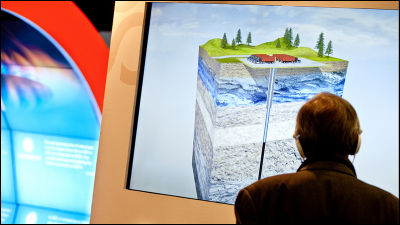Research results that it is possible to investigate earthquakes and underground faults with 'Whale Song'

Some whales are known to make sounds for communication such as courtship, and are called
Seismic crustal imaging using fin whale songs | Science
https://science.sciencemag.org/content/371/6530/731
The Haunting Music of Whale Song Is an Ocean of Untapped Seismic Data, Scientists Say
https://www.sciencealert.com/whale-songs-could-help-with-scientific-studies-of-earth-s-crust
The songs of fin whales offer new avenue for seismic studies of the oceanic crust
https://phys.org/news/2021-02-songs-fin-whales-avenue-seismic.html
In a paper published on February 12, 2021, a research team of Oregon State University geophysicist John Naberek and others announced that 'whale songs can be used to examine the geology of the seafloor.' is. Regarding the content of the research, Mr. Naberek said, 'There have been studies using whale songs to track whales and investigate the ecology of whales. However, when listening to whale songs, I was able to hear not only whales but also voices from the earth, so I thought that whale songs could be used to study the earth. '

The whale song proved to be possible to examine the formation by a strong signal received by the seismograph when
After receiving the whale song, Naberek et al. Realized that the data when the whale song was reflected from the bedrock was also recorded, and when Naberek et al. Analyzed the data of the seismometer in more detail, the whale's song Vocalization was observed as it hit the sediments on the seabed, the basalt layer beneath it, and the crust of the mottled rock beneath it, reflecting and refracting. The results of this analysis were almost in agreement with the results of measurements by general scientific research.

by Kuna et al., Science, 2021
The research team believes that it is possible to investigate the seismic faults that cause earthquakes and tsunamis in more detail by recording the echoes generated by the whale song hitting the bedrock with a seismograph. In addition, when the sediment on the seabed is shaken by the earthquake, seawater is discharged from the gap between the sediments and the sedimentation speed of the sediment accelerates, so it is possible to investigate the earthquake by applying this.
The whale song does not replace the conventional observation technology because it cannot investigate any sea area with high accuracy, unlike the investigation by air gun oscillation using the sound generated when compressed air is released. .. However, it is difficult to obtain permission from the regulatory authorities for the observation technology that artificially generates sound because it has a large impact on the ecosystem and is costly. On the other hand, the observation technology using whale songs only needs to measure the barking of whales in the seas around the world with seismographs already installed on the seabed, so the impact on costs and marine ecosystems is minimal. It can be suppressed to.
Mr. Naberek said, 'The results of this research are a proof of concept that will lead to the development of a new research method using whale bark data. If this method is put into practical use, conventional earthquakes using whale bark data. It will be possible to supplement the survey or explore the oceanic crust in areas where standard surveys are not possible. '
Related Posts:







